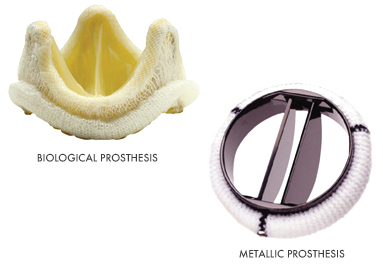Cardiovascular system Valve surgery
The heart valves help the blood to circulate inside the heart and to the two large arteries in our body (pulmonary artery and aorta, which leave the right and left ventricles, respectively). The valves open and close themselves aiming to enable the blood flow in only one direction. When a valve becomes diseased (valvulopathy) and there is need for surgery, the procedure is the valve surgery. A valve plastic surgery can be performed in some cases and the valve replacement with a prosthesis is indicated when the disease is more advanced.
There are several available prosthesis types. The metallic and biological prostheses are the types most used in our context.

The biological prostheses are made of a treated animal (pig or ox) tissue. These prostheses have the non-obligatoriness of using anticoagulant medicines as a potential advantage, but have a limited durability. The metallic prostheses are made of a carbon alloy, present great durability, and have very little structural issues, but there is need for using anticoagulant drugs for life. Such medicine (warfarin) is taken as a tablet and thins the blood, so preventing the clot formation in the valves.
In both prosthesis types, the endocarditis (valve infection) prevention with antibiotics must be performed before each procedure that causes a potential entrance of bacteria in the blood (for example, dental or urinary procedures).
Support notes
Valvulopathy: Disease that occurs in the heart valves. Click here to go to the page of Valvulopathies and to know more about this subject.

